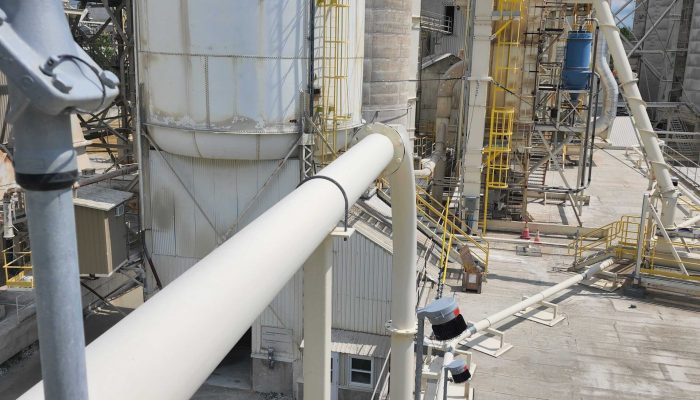
Our specialty is undoubtedly the pneumatic handling of dry bulk products. Since 1990, CON-V-AIR has worked in a multitude of applications, the most common being the pneumatic handling of various chemicals and minerals. We also process the pneumatic transfer of almost all food products (sugar, milk powder, flour, sesame seeds, spices, etc.), many chemicals (silica, borax, calcium carbonate, urea, carbon black, zinc stearate, etc.), pharmaceuticals, and even explosive products. Our varied experience allows us to appreciate the different products used by our customers and adapt our systems to the specific needs coming from their respective areas of activity.
Our systems have all types of air moving equipment to minimize the costs associated with the purchase of blowers and reduce the energy needed to operate the pneumatic transfer system. Moreover, we favour large diameter pipes that allow systems to operate at a lower pressure and gives the capability to increase the capacity in the event that the requirements of the process should change. This gives our customers a heavy-duty system that will still perform when the plant condition changes. We are known for the manufacturing of heavy-duty systems.
For an equivalent lenght of 200 feet (20 feet per elbow).
This table is for reference only.
Another device for supplying a pneumatic conveyor line by positive pressure in a dilute phase mode is the eductor. The eductor uses the venturi effect to feed the line. A high-speed air jet creates a vacuum that sucks the powder. Then, a venturi converts part of the static pressure to velocity pressure to push the material in the transfer line. The most common application of eductors is the continuous chemical feed of sorbent in the gas treatment industry. Activated carbon, lime or sodium carbonate is drawn from the output of a volumetric feeder to the injection points in the gas pipes. By mixing these adsorbents with the gas to be treated before the baghouse, it is thus possible to remove the mercury, acidity and other products harmful to the environment.
Another advantage of eductors for pneumatic transfer lies in the fact that they have no moving parts. They are very popular for applications with abrasive products and food products because they are easy to clean. The possible maximum conveying rates are, however, lower than for other air-handling devices. They are recommended for small conveying rates.
Pneumatic transfer with a semi-dense phase system is achieved at a concentration ratio of powder / air greater than 10. These systems carry the powders at a pressure less than 15 psi. However, as these are batch systems, we do not have to worry about leakage through rotary locks. Thus, by increasing the pressure, we do not increase the leakage and therefore, the systems are more efficient. The most common application of this type of system is the pressurized truck or railcar unloading into a silo. One can reach flow rates of the order of 20 to 30 tonnes / hour in a line of 4 “(100 mm). In the factory, a transportation tank is filled at atmospheric pressure and then emptied into the conveying pipe. As the pressure of operation is below 15 psi, it is not as regulate the pressure vessels.
The dense phase systems are very similar to the systems in semi dense stage except that they operate at pressures above 15 psi. Therefore, special attention should be given to the design and manufacture of tanks and transfer lines are governed by the regulations on pressure vessels. Typically, an operating pressure of 40-50 psi is normal. The concentration ratio of product / air is of the order of 40. The most common applications include manipulation of the cement, sand and other abrasive or brittle products (carbon black). By transferring the products at a higher pressure, we can reduce abrasion in transfer lines and elbows and reduce the breakage of the particles.
The vacuum pneumatic conveying systems have many advantages. Using suction to enter the product in the line avoids back flow into the local atmosphere of fine powders. Also, there are no shears to enter the product in the line.

©2025 All rights reserved | Une création Web Observ